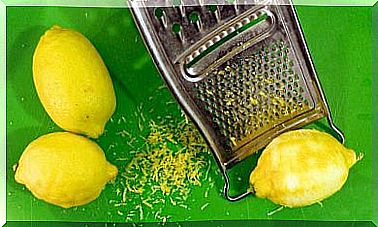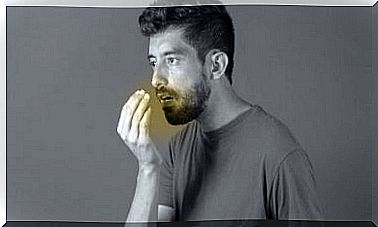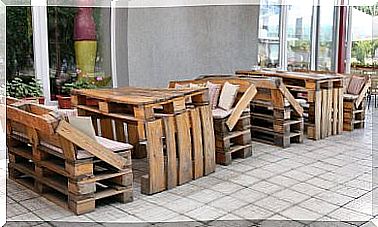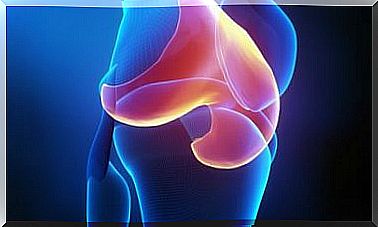Routine Using An Exercise Ball
The fitball is useful for toning muscles, improving posture and increasing agility. Likewise, it serves to work the coordination and perception of the body.
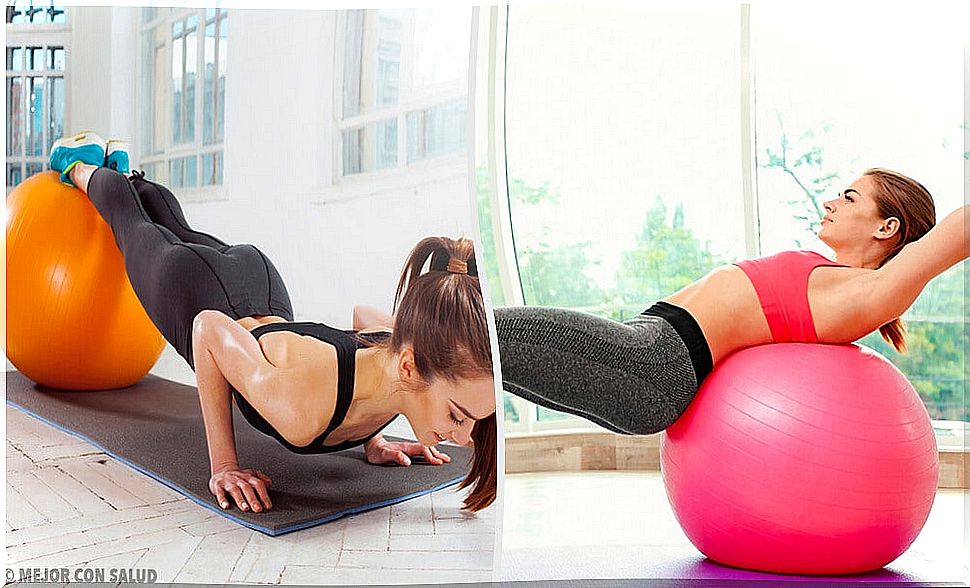
The exercise ball is a very popular item in the fitness world . It is present in most gyms and training centers, and you can even buy one and use it at home.
Next, we will present a routine to take advantage of the properties of the fitball . Afterwards, you will no longer have excuses to use it as part of your usual routine.
The fitness ball to get in shape
There are many different ways to exercise. According to the objectives and capacities of each person, the routines and training plans change and new elements are added.
In the case of the exercise ball, it not only serves to tone muscles, but also to improve coordination and perception of the body, as indicated in a study carried out with adolescents and published by the journal Women’s Health: Contributions to the quality of Life of the Catholic University Sedes Sapientiae.
For this reason, this element is used in rehabilitation sessions, yoga, Pilates or to do sit-ups in many other disciplines. In fact, a study published in the Journal of Physical Education and Sport confirms that Pilates exercises with this element help reduce chronic low back pain.
One of its virtues is that it avoids twisting or unexpected or violent movements; Likewise, it reduces the chances of injury and allows several muscle groups to be activated at the same time, since it is an unstable environment.
For all the aforementioned, in your exercise ball routine you can not miss these jobs:
Bridge
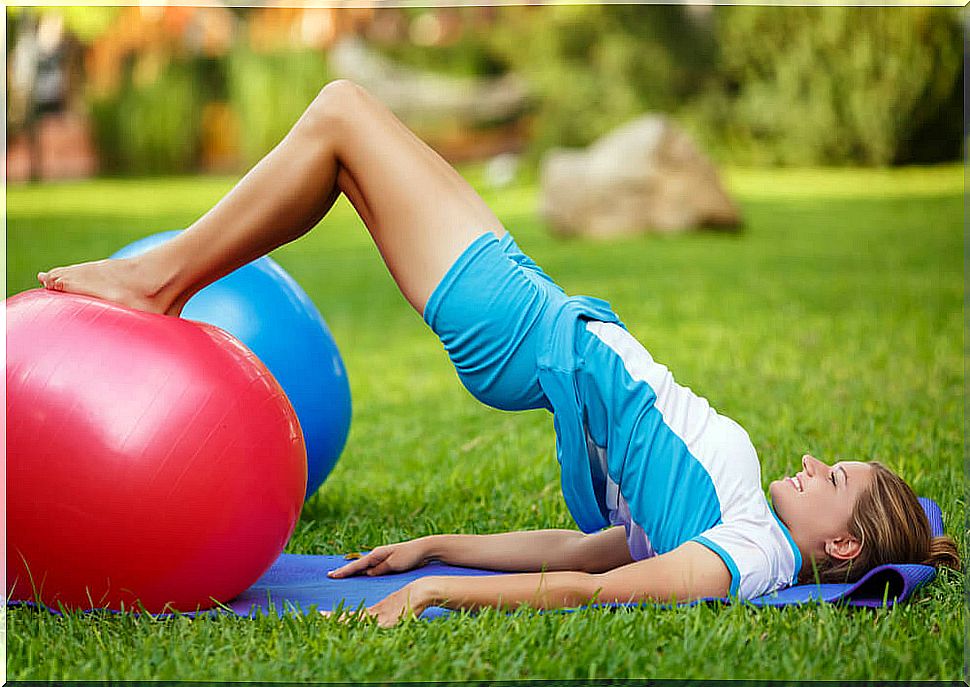
The goal of this exercise is to strengthen your abs, hamstrings, and glutes. As stated in a study published by the Brazilian Journal of Physical Therapy , adding an element of instability increases the demand on the muscles of the middle zone.
- To start, lie on your back on a mat and rest your palms on your sides.
- Next, place your calves on top of the ball and lift your pelvis slightly to form a bridge.
- Compress your glutes and abdomen as you go up.
- Finally, descend slowly after a few seconds have passed.
- Do 10 repetitions.
Leg lift bridge
This second alternative is similar to the previous exercise, but with some variations. The leg lift bridge serves to strengthen the back of the thighs and glutes.
- Starting like the “traditional” bridge, bend your knees and rest your heels on the exercise ball.
- Then, lift your pelvis and stretch one of your legs — as if the tip of the foot wanted to touch the ceiling.
- Hold for 5 seconds and go back to leaning on the fitball .
- Do the same with the other leg.
- Repeat 10 times per side.
Ball squat
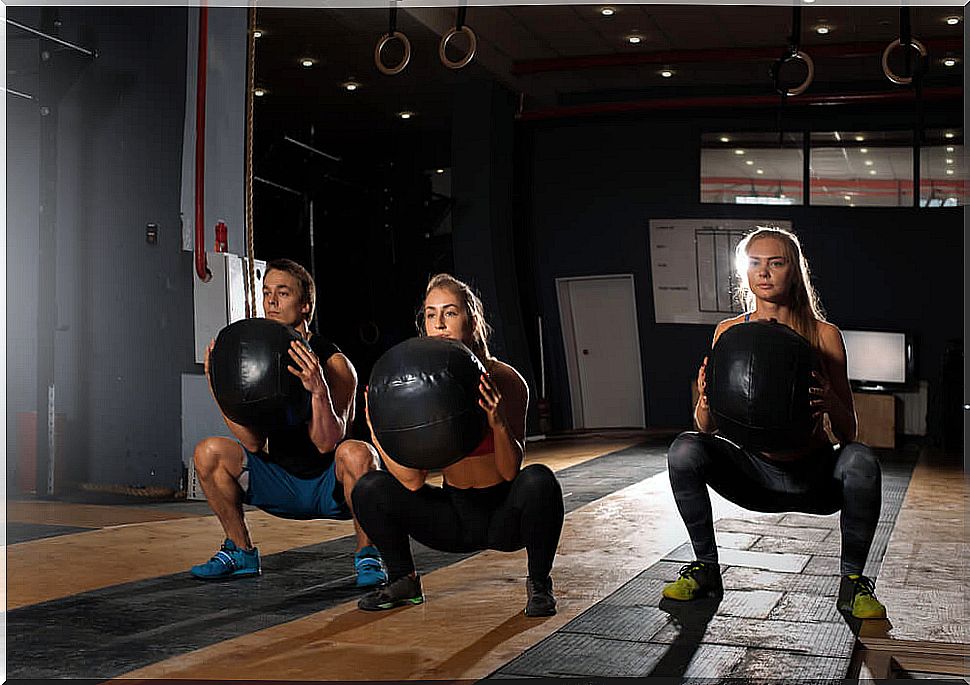
This exercise is called ball squat in English and is used to work the legs, buttocks and back.
- To start, stand with your back to the wall.
- Place the ball at the level of the sciatic and lean on it — the ball is in the middle between you and the wall. Without dropping the ball, bend your knees and lower your glutes.
- You can put your arms stretched out in front to improve coordination and balance.
- Don’t forget to contract your abs throughout the exercise.
- Once you’ve mastered it, the next step is to perform it with a dumbbell in each hand.
Sit-ups with the exercise ball
There are many options for doing sit-ups using an exercise ball. Here are some options:
- To start with the most basic – although not the simplest -, place the fitball against a wall so that it does not move.
- Next, lie on your back on the ball.
- Spread your legs slightly and fully support the soles of your feet.
- Bring your hands to the back of your neck and raise your torso, as in traditional crunches you do on the floor.
- Do 20 reps.
Abdominal extensions
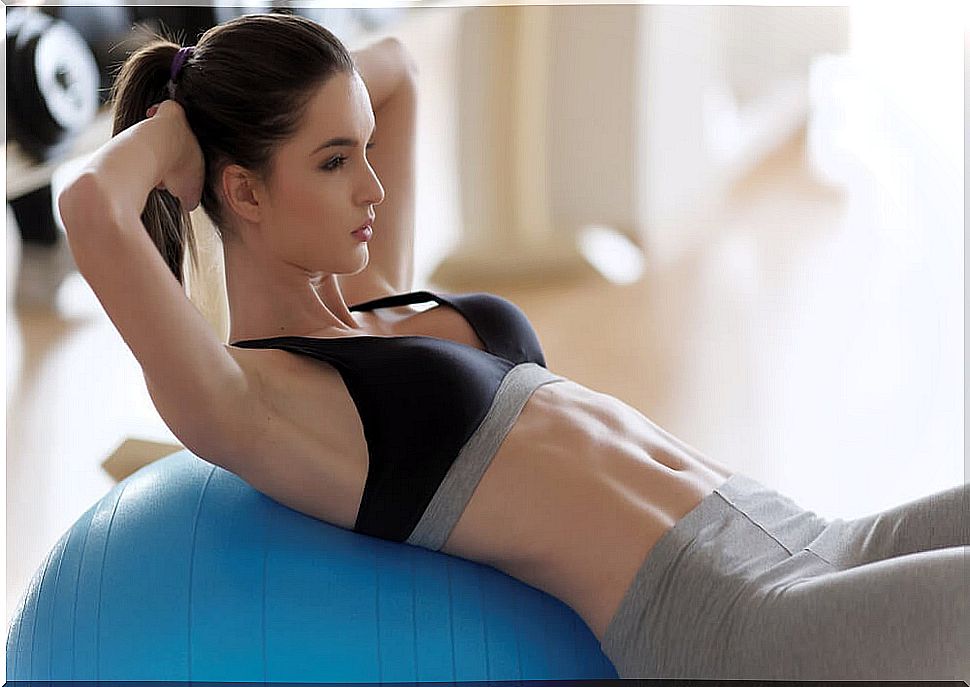
This exercise requires extra effort to prevent the ball from moving more than necessary and thus maintain stability. Therefore, it is a very good option to exercise the core:
- Get on your knees with the fitball in front.
- Rest both hands on it.
- Then roll it gently so that the body is diagonal to the ground.
- Make 10 bearings and rest before starting a new series.
Iron
If you don’t like doing crunches very much, this exercise can easily replace them. It is quite intense and its results are very good, as stated by research published by the journal Physical Therapy Rehabilitation Science .
- Begin in the same way as in the previous exercise, but instead of supporting your hands, place your forearms on the ball.
- Stretch your body so that it is diagonal to the floor.
- Only the balls of the feet are resting on the ground.
- Do not forget to contract the muscles of the abdomen throughout the exercise, so that the body remains in a straight line.
Oblique crunches
Oblique abdominal exercises are used to strengthen the lateral muscles of the abdomen. One of them is done as follows:
- To start, stand near a wall to support your feet.
- Lie on your side on the ball. The legs should be in the air.
- Place your hands behind your neck and raise your torso to the side of the wall.
- Repeat 10 times on that side and then do the same on the other.
Other work with the exercise ball
With the exercise ball work outlined above, we emphasized leg and core strengthening. Finally, we leave you a movement more intended for the lower extremities and another for the arms.
Lunges back
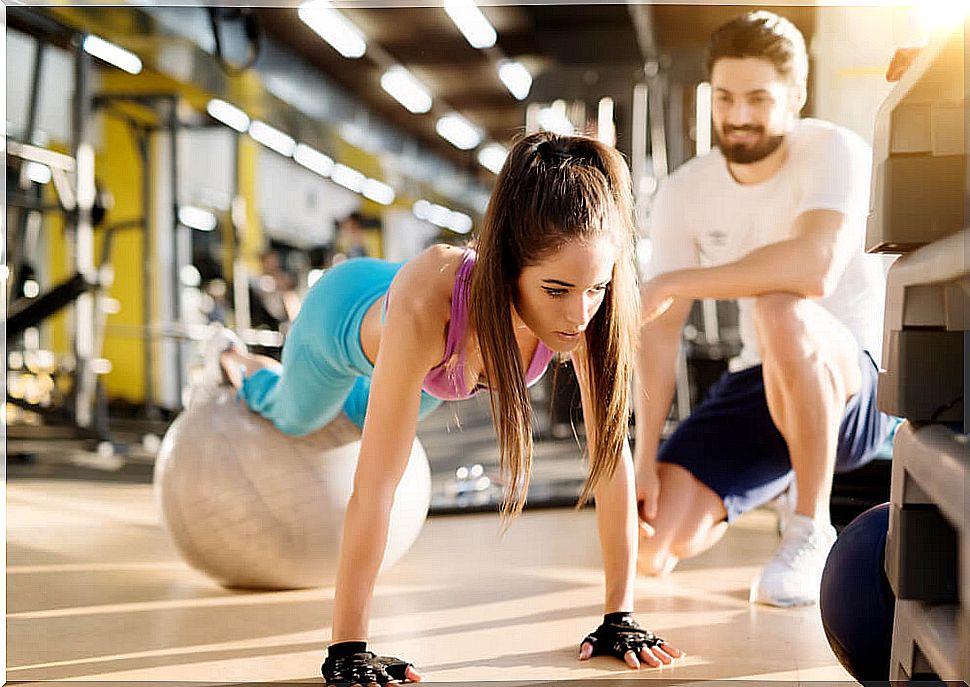
As a Harvard Health Publishing publication details, the stride is a very good exercise to strengthen the muscles of the legs. The detailed technique in the cited article is as follows:
- Stand with your back to the exercise ball and support your instep and right calf. The hands are at the sides of the body and the back is always straight.
- Next, bend your left knee and bring your right leg back, helping you with the ball.
- Hold for a few seconds and return to the starting position.
- Perform 10 reps and move to the other leg.
Dumbbell flights

Flights are an exercise that allows you to work the deltoids, as well as coordination and balance. You will need, in addition to the exercise ball, 2 dumbbells. Once you have them, follow these steps:
- First, lie on your stomach with your chest and belly supported by the fitball .
- The legs are semi-flexed, the knees rest on the bottom of the ball and the balls of the feet, on the ground.
- Grab the dumbbells — one in each hand — and begin the exercise with both elbows together in front of your torso.
- Spread your arms out to the sides to align your elbows with your shoulders.
- Do 10 repetitions.
Include the exercise ball in the routine!
The works outlined above are some options for adding the exercise ball to your routine. For greater diversity, and mainly to ensure that you use proper technique when exercising, we recommend consulting with a certified trainer.
If you decide to implement fitball as part of your physical activity, you will be able to take advantage of its benefits. Also remember to complement exercise with good habits, such as a healthy diet and adequate rest. Courage and train!
